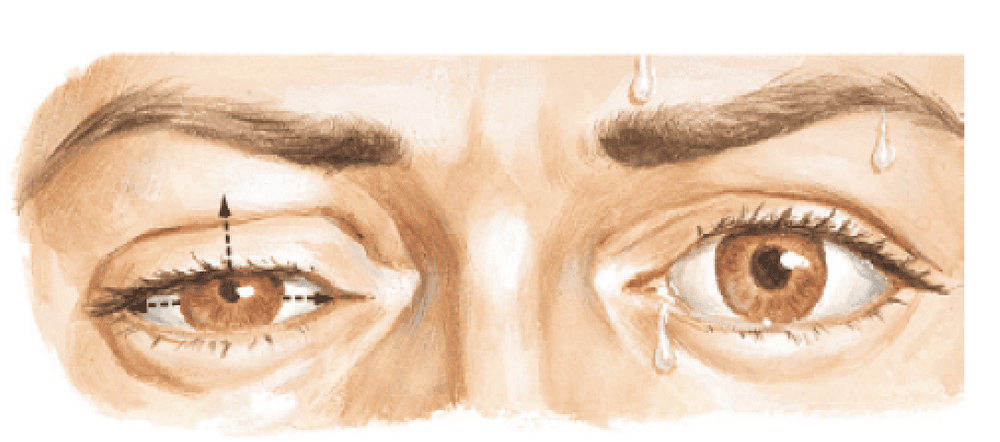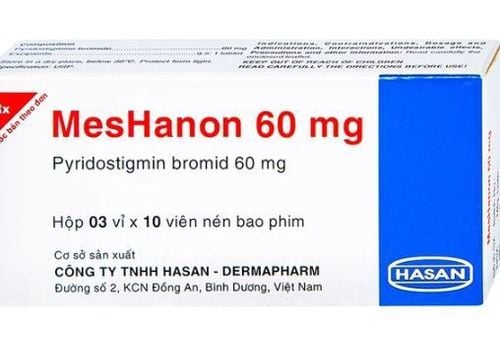This is an automatically translated article.
Myasthenia gravis is an autoimmune neuromuscular disease that often has a silent onset, with typical symptoms such as drooping eyelids, crossed eyes, headache, difficulty speaking and swallowing,... The disease can cause coma, even death if not treated promptly. The risk of death from myasthenia gravis is primarily due to respiratory complications.
1. Causes - symptoms of myasthenia gravis
Myasthenia gravis (English name: Myasthenia gravis) is an autoimmune neuromuscular disease leading to muscle weakness or weakness, seen in all ages. The essence of the disease is a decrease in the number of acetylcholine receptors at the motor plate due to autoimmune antibodies attacking these receptors.
Most cases of myasthenia gravis have insidious onset. It can be triggered by stress, an infection (usually a respiratory infection), anesthesia, or pregnancy. Is myasthenia gravis contagious? Myasthenia gravis is not a disease that can be passed from person to person.
Symptoms of the disease are often easily detected, including: drooping eyelids, crossed eyes, difficulty speaking, difficulty swallowing, chewing fatigue, headache,... The first manifestation is usually the orbital muscles, chewing muscles, neck muscles, etc. facial and pharyngeal muscles. The respiratory muscles may also be affected. In the final stages, muscle damage occurs throughout the body.

Sụp mi lác mắt do bệnh nhược cơ
2. Is myasthenia gravis dangerous?
Myasthenia gravis is classified into 4 stages:
Stage 1: Only one muscle group has myasthenia gravis, usually the motor muscles of the eye; Stage 2A: All muscles have myasthenia gravis but no respiratory or pharyngeal myasthenia gravis; Stage 2B: All muscles have had myasthenia gravis, accompanied by oropharyngeal symptoms; Stage 3: All muscles have myasthenia gravis, accompanied by oropharyngeal and respiratory disorders. Regarding the risk of death, the life of patients with myasthenia gravis is threatened in two situations: myasthenic crisis and cholinergic crisis. Specifically:
Myasthenia gravis: The disease rapidly worsens or suddenly, muscle weakness increases rapidly, struggles, respiratory disorders; Choline secretion: In case of overdose of anti-myasthenic drugs, patients have salivation, sweating, fatigue, vomiting, intestinal spasms, loose bowel movements, bladder pain, increased bronchial secretions, and copper contractions. death, dyspnea, pulmonary edema, myoclonus, muscle weakness, jaw stiffness, cramps, swallowing disorders, dysphonia, respiratory disorders. There are cases of excitement, nervousness, dizziness, headache, fear, convulsions, confusion or even coma.

Sử dụng quá liều thuốc chống nhược cơ khiến bệnh nhân bị co giật
In the above cases, it is necessary to provide emergency treatment and proper respiratory support according to the active resuscitation treatment protocol to help the patient overcome the critical crisis.
So how long does myasthenia gravis live? Usually, the disease progresses to its most severe within 1-7 years. The longer the period of myasthenia gravis, the lower the risk of systemic weakness. The disease progresses more rapidly in men than in women, and its onset is more severe in young people than in the elderly. Survival time will depend on age, general health, sex, time of disease detection, treatment method,... In children, myasthenia gravis has a rather good prognosis: about 30% of children without thymectomy and 40% of children who receive thymectomy recover completely.
Myasthenia gravis is a dangerous disease that needs early detection and treatment. Therefore, if you see signs of myasthenia gravis, you should go to the hospital soon to be examined and treated by a doctor, to avoid missing the best detection time, making it difficult to treat. .
To register for examination and treatment at Vinmec International General Hospital, you can contact the nationwide Vinmec Health System Hotline, or register online HERE.













